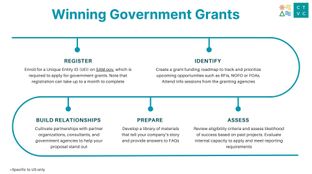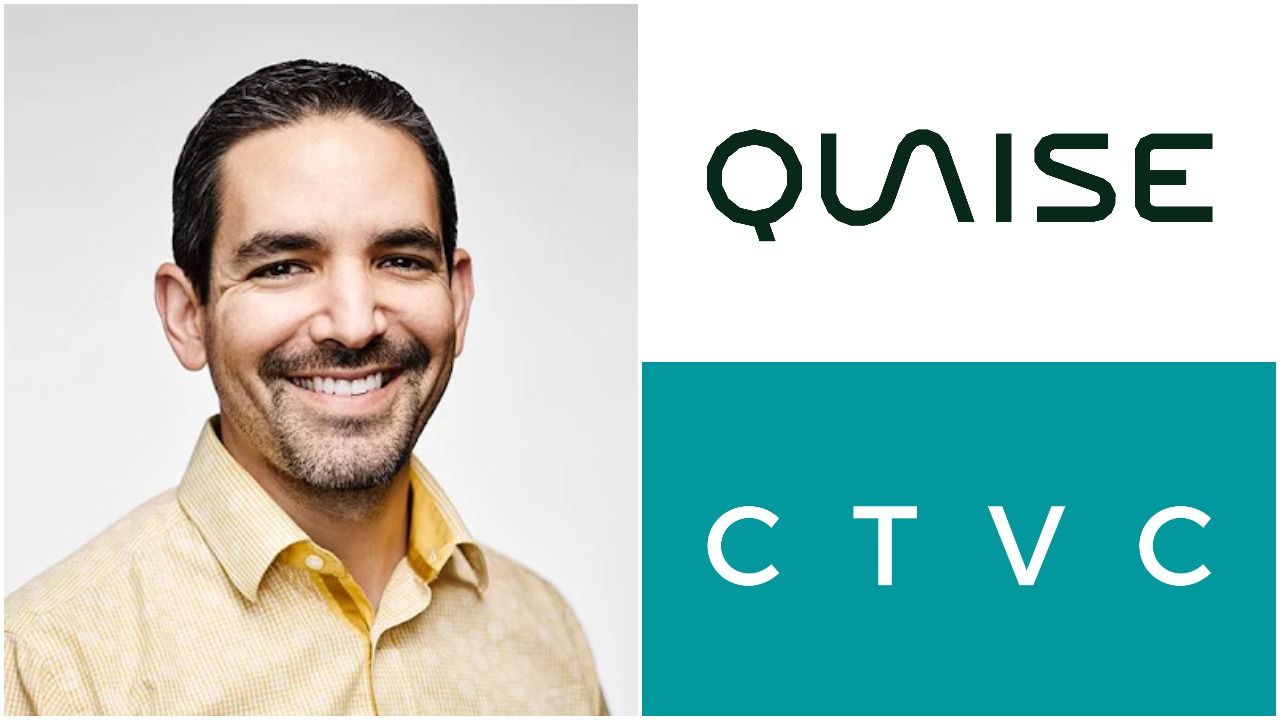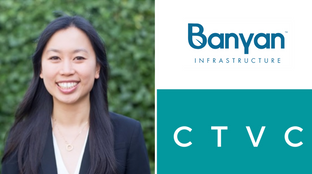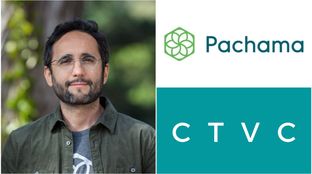
🌎 Get ready with me: Government grants edition 💅💵
A founder’s guide to winning non-dilutive funding with Elemental Excelerator
How Quaise is making geothermal supercritical to the energy transition

How do we achieve the energy transition at terawatt scale? Nuclear fusion is one answer, and supercritical geothermal is the other. Turns out the clean energy we need is sitting right below our feet - as long as you can drill down deep and hot enough. With a fresh $40m of Series A funds, Quaise is taking O&G know-how and transitioning from drilling for oil and gas to drilling for heat deep under the Earth’s surface. We dig deeper with Quaise CEO, Carlos Araque, on how supercritical geothermal can enable a smooth transition of O&G resources and workforce, give existing power plants new life, and fill the missing gap in the renewables repertoire to bring new gigawatts of energy online with a fraction of the footprint and labor cost.
How does geothermal fit into the existing renewables landscape?
In relation to other renewables, geothermal is at an advantage from the perspective of land, materials, metals, minerals, and labor. Geothermal can also decarbonize heat for industrial, agriculture, and residential applications. Wind and solar will undeniably play an important role in the 2020s and even into the mid 2030s. But when you look at the full picture of not only the 23 terawatts used today - but the 40 that we'll need by 2050, or the 100 that will be needed by 2100 - it’s clear that they won’t be able to fulfill our entire energy demand.
Historically, geothermal has been limited to what humans can access near the surface. With existing technologies, geothermal energy could go from 0.5% of the energy mix today to ~5.0% in the next decade. But if you break away from those preconceptions, and believe in what Quaise is looking to accomplish, then geothermal could make up as much as 50% of the global energy mix. Combined with fusion, geothermal is the way forward to achieving a clean energy transition at terawatt scale.
What have been existing challenges with geothermal?
Geothermal is hard to do, much harder than oil and gas. A lot of the technology used in oil and gas actually falls short when applied to geothermal. The drilling required for oil and gas is relatively shallow and rarely exceeds 150ºC, and instances where geothermal flows to the surface have already been tapped for centuries (e.g., in Iceland or The Geysers in the West Coast of the US). For most geothermal, you have to dig deeper to access the necessary heat and energy.
In the past, this has been too expensive and technologically infeasible to do. Quaise was built to break that barrier because the world needs geothermal if it’s going to get serious about this clean energy transition. And we think we know how to do it.
What is “supercritical” geothermal and how does Quaise’s technology enable untapped geothermal energy?
Supercritical geothermal generates more energy than geothermal, about 10x that of regular geothermal. That matters for two reasons. First, the economic incentives align - the higher the power the higher the revenues. Second, the scalability improves - supercritical geothermal can repower existing power plants without recreating the wheel of power infrastructure.
Supercritical is a technical term for the supercritical phase of water when it’s not a liquid, solid or gas but a supercritical fluid. A supercritical fluid contains the properties of liquid and gas which makes transporting energy much easier.
What’s the story behind the founding of Quaise? When did you join the team?
I used to work for one of the leading oil and gas technology providers, Schlumberger. I’m an engineer at heart, but after 15 years with them, I became increasingly concerned about the energy transition. I saw a huge challenge and a huge opportunity at once, represented in humanity’s collective need to transition energy at massive scales. I decided to leave the company in 2017 and, after reconnecting with MIT, ended up at The Engine, the venture fund the Institute had recently spun out to commercialize ground breaking technologies. When I was on the investor side of the table, somebody presented the idea to (literally) dig deeper.
My first reaction to this concept was that it checks all the boxes, especially the boxes pertaining to scalability and impact. The question became: How do you form a company out of this concept? Vinod Khosla had conviction that we’d be able to answer that question, and he was our first backer in 2018 when I started Quaise as the CEO. Quaise was born with over 10 years of MIT research, and my role was to take that research from a technological concept to an articulated product and business roadmap on a commercial scale. Almost three and a half years later, we’ve raised $63M and we have a line of sight towards that first level of field deployment.
What is Quaise’s technology and how is it differentiated from other innovative geothermal approaches?
I use an analogy to describe our technology. Think about how we communicate over Zoom. Fiber optics allow lasers to transmit information over long distances. If we stretch this analogy a bit, Quaise will transfer a lot of electromagnetic energy, millimeter waves in our case, over kilometers in a fiber optic that looks just like a standard oilfield pipe. We keep the design of the downhole system simple which makes drilling to extreme depths and temperatures feasible. That pipe is the only thing we put in the hole and suddenly, we have a very simple and efficient way to transfer a lot of power from the surface to the bottom of a well to do the drilling work.
Now, let’s talk about drilling. As you go deeper, the trend is hotter and harder. Temperatures rise, and the surface wears down the drill bit more over time. When it comes time to change your drill bit, you might be so deep in the ground that it could take a week to pull the drill out, replace it, and get back to drilling. We are moving away from this inefficient process. We start with conventional drilling from the top, but our non-mechanical, millimeter wave drilling takes over once we get down to the basement.
Other geothermal companies aren’t innovating the drilling process. They use conventional drilling methods and try to get creative with how to exploit geothermal energy, which is great. But if you want to make geothermal a terawatt scale energy source, you have to drill deeper and hotter. All the flavors of geothermal become exponentially better with our drilling technology.
What are the remaining technology hurdles that Quaise is focused on solving? What’s a realistic timeline for the first Quaise power plant?
If you are developing any type of radically disruptive technology it takes time, somewhere between 5-10 years. If someone says they can do it in three years, don’t listen to them; breakthrough innovation takes time. We aim to show that our tech works in the field by 2024 - 17 years after MIT first articulated the idea. This will be an engineering challenge. Today, our systems exist as lab machines, and bringing our technology to the field won’t be the 20 kilometer default. We’re striving to extend existing wells by an extra kilometer to temperatures that conventional drilling can’t handle. When we start hitting 400-500ºC, we will have proven our point.
Looking ahead to 2026-2028, that’s when we think we can start packaging the drilling technology and repowering our first plant. Again, we won’t be building a new plant, but instead we will use existing infrastructure and target a site with the right geological settings and market dynamics. From there, we’ll pull in the might of the oil and gas industry. If we convert the first power plant, and economics and technology look scalable, it's just going to be a matter of deploying oilfield services towards geothermal. We expect to see the same economic profitability that the oil and gas industry is used to.
What is your deployment and go to market plan?
Let’s start at the beginning. In the very first days of the oil and gas industry, companies like Standard Oil, Exxon, and Chevron were created to sell the end-product of drilling: energy in the form of oil and gas. So, in my pitch to investors, I always say that Quaise is an energy company, not just a drilling company. If we can unlock deep geothermal, we will capitalize on the full value chain and sell the steam and electricity that comes from that.
Any discussion of the energy transition comes with the implication that mining is needed to access more and more raw materials. Given Quaise’s role in the energy transition, we also sit at the intersection of disrupting mining exploration. The workflow for finding new minerals requires lots of drilling and underground ore body characterization, and our technology is quite capable of that. In the early days as a differentiated drilling company, we can tap into these markets and start taking advantage of the licensing opportunities. As we increasingly capitalize the company, we will become the energy developer that we aspire to be.
Who are the other key actors (corporates, governments, investors, etc) that you’ll have to work with to scale?
A lot of the power plants that we will use are on private land, not federal land. Unlike typical geothermal drilling which takes place on federal lands, repowering a power plant is something you do behind the fence. In this case, permitting is much more straightforward especially if we can be treated under the already existing regulatory framework of oil and gas.
I don’t want Quaise to start building its own drilling rigs anytime soon. As a result, the drilling companies of the oil and gas industry, like Nabors, are some of the most important partners for us. We keep our partners close to us; the CFO of Nabors is one of our board members. We also need oilfield service providers to help with subsurface measurement technologies. Quaise will need civil work to connect a geothermal field to an existing power plant, put in the wellhead, pipe the steam, and integrate our technology into a power plant.
The answer to this question would be much more lengthy and nuanced if we were talking about clearing land for a new power plant. But we don’t start there. We start with the power plants that are already built and have no other alternative than being forced to shut down from a variety of players incentivizing the clean energy transition. We are offering them the chance to extend their life and simultaneously help to provide clean energy.
What roles does Quaise play in supporting the workforce transition from oil and gas to renewables?
In the early days, our team will be highly technical. But as we grow, many skill sets from oil and gas are directly transferable to geothermal. Regardless of whether you’re drilling for oil or for geothermal, safe and efficient field operations are essential. Quaise provides a pathway for the conversion of generation power plants to be renewable so that the workforce operating that plant can stay put. Importantly, those jobs aren’t lost in the clean energy transition.
What does Quaise look like at scale?
There is no limit to the amount of clean energy supply that the world can buy in the next several decades. The energy transition will demand more and more heat and electricity to enable hydrogen, synthetic fuels, and the electrification of everything. By the 2050s, we’re talking about 40 terawatts of demand for carbon-free heat and electricity. Quaise intends to be one of the primary energy providers needed for the clean energy transition.
There will always be solar, there will always be wind. But when you look at those technologies’ externalities at scale, I think people will opt for geothermal over everything else. Quaise can not only re-power existing power plants, but can also bring new gigawatts of energy online to push economies forward. We transform land into clean energy generation facilities, with a fraction of the footprint impact and labor cost of other clean technologies.
Congratulations on your $40M Series A funding round announced earlier this week! Who’s involved, and - most excitingly - what’s next for Quaise?
In the near term, we’ll continue working out of the Oak Ridge National Labs to scale our technology to higher power levels. The $40M fundraise from our investors at Safar, Prelude, Fine Structure Ventures, The Engine, Collaborative Fund, Nabors and others is for the product development needed to take our lab-scale technology to a field deployable system. Our team in Houston comes from an oilfield product development background. We’re going to build two machines: a 100 kilowatt machine and a 1 megawatt machine. The 100 kW machine will be portable, so we can use it across a series of trial sites in New Mexico and Colorado; this machine enables the mining exploration business case. The 1 MW machine will be integrated into a conventional oil and gas drilling rig from our partners at Nabors Industries to demonstrate the extension of an existing well to reach geothermal depths and temperatures.
In terms of what’s next, we’re hiring for engineers and business folks who understand how to creatively craft technical solutions and new capitalization structures for industries that don’t currently exist, but will be required soon. What is the value we can create if we unlock unlimited, $0.03/kwh and below, renewable energy no matter where you are? And what is the benefit to the biosphere if we can do all this with a fraction of the land and material footprint that other renewables would require?
On a closing note, we need everybody to think about geothermal in terms of what it can provide, not what it currently provides within existing technological limitations. Let’s amplify the message that by drilling deeper, geothermal becomes a critical part of the energy transition at the 40 terawatt scale - when wind and solar are not enough.
Want to dig deep into geothermal? Quaise will be hiring across the board for tough people who want to get their hands busy working on tough problems. They want to hear from the best drilling, geothermal, millimeter wave and gyrotron experts in the world to build their Boston, Houston, and Cambridge, UK team. Big thanks to the CTVC team who were supercritical to this interview, namely Ted Orben and Nell Gallogly.

A founder’s guide to winning non-dilutive funding with Elemental Excelerator

Infrastructure investing for impact with Banyan Infrastructure's Amanda Li

Venturing into nature with Diego Saez-Gil at Pachama